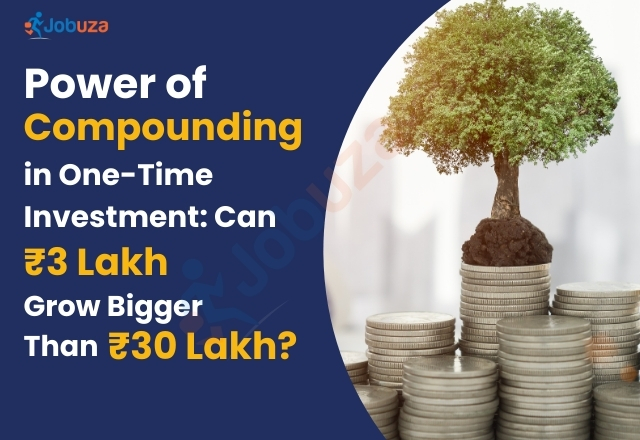Can a ₹3 Lakh One-Time Investment Outgrow ₹30 Lakh? The Power of Starting Early
In personal finance, one principle stands taller than most: start early. It’s not about how much you invest, but when you start. This is the power of compounding—an underrated force that rewards time more than money.
One surprising question that often stumps even seasoned savers is this: Can a ₹3 lakh one-time investment create more wealth than a ₹30 lakh investment made years later?
Believe it or not, the answer is yes—and the numbers back it up.
The 30-Year Investment Window: A Missed Opportunity?
Most salaried individuals have a working window of about 30 years, typically starting around age 30. While people usually begin their careers by 25, the early years are often spent adjusting to a new lifestyle, building skills, and increasing income.
Because of this, many delay investing with the mindset of “I’ll start when I earn more.” But this delay comes at a significant cost. The real game-changer in wealth creation is not how much you invest—it’s how long your money stays invested.
How Compounding Works Over Time
Let’s simplify the power of compounding with an example:
If you invest ₹1 lakh at an annual return of 12%, here’s what it can grow into:
-
₹3.10 lakh in 10 years
-
₹9.64 lakh in 20 years
-
₹29.96 lakh in 30 years
-
₹93.05 lakh in 40 years
That’s a nearly tenfold increase between the 20th and 40th year—without investing an extra rupee. This is what makes compounding such a powerful ally for long-term investors. Your returns start generating their own returns, snowballing over time.
₹2 Lakh vs ₹20 Lakh: Does Size Matter?
Here’s another scenario to consider:
-
A ₹2 lakh investment held for 35 years at 12% annual returns grows to about ₹1.05 crore.
-
A ₹20 lakh investment held for just 14 years at the same rate grows to only ₹97.74 lakh.
The outcome? The smaller investment wins, simply because it had more time to grow.
The Main Event: ₹3 Lakh vs ₹30 Lakh
Now, the core comparison:
-
₹3 lakh invested for 40 years at 12% annual returns becomes approximately ₹2.79 crore.
-
₹30 lakh invested for 19 years at the same rate becomes around ₹2.58 crore.
Despite the second investment being ten times larger, it falls short. The ₹3 lakh investment gains an edge purely because of time. That’s a capital gain difference of nearly ₹47.77 lakh—in favor of the smaller, earlier investment.
Delaying SIPs Can Cost You Crores
Let’s see how SIPs (Systematic Investment Plans) are affected by delays. Assume a monthly SIP of ₹10,000, increasing by 5% annually, continued until age 60.
-
Starting at 30:
-
Total Investment: ₹79.72 lakh
-
Capital Gains: ₹3.87 crore
-
Final Corpus: ₹4.67 crore
-
-
Starting at 35:
-
Total Investment: ₹57.27 lakh
-
Capital Gains: ₹1.91 crore
-
Final Corpus: ₹2.48 crore
-
-
Starting at 40:
-
Total Investment: ₹39.67 lakh
-
Capital Gains: ₹87.85 lakh
-
Final Corpus: ₹1.27 crore
-
A five-year delay reduces capital gains by over ₹1.9 crore. That’s the true cost of waiting.
Final Thoughts: Start Early, Grow Bigger
The data is clear. Whether it’s a one-time investment or monthly SIPs, the earlier you start, the more you gain. Compounding is not just about returns—it’s about giving your money enough time to multiply. Even a modest investment today can beat a large one tomorrow.
Start small if you must, but start now. Your future self will thank you.



